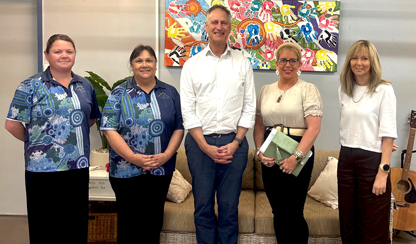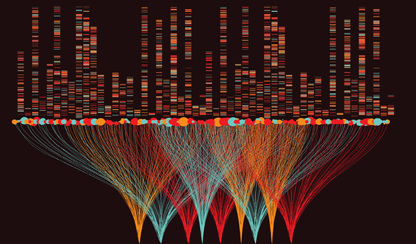28 September 2022
Institute news

The cause is common, but in most cases of cardiac arrest there are no warning signs or modifiable risk factors.
More than 75 per cent of people who have a cardiac arrest have no warning symptoms, new research out of the Baker Heart and Diabetes Institute reveals.
The research, published in Europace, also revealed that almost two-thirds of out of hospital cardiac arrest (OHCA) patients whose cardiac arrest was due to a cardiac cause have no standard modifiable cardiovascular risk factors. Cardiac arrest is the leading cause of death for men and women aged 50 or less.
“These are devastating statistics because it means that three quarters of first presentations are fatal presentations,” report lead researcher and cardiologist Dr Liz Paratz said. “Currently, we would identify only a few of these people in advance.
“Our research has found that of patients with cardiac cause of OHCA, almost two-thirds have no standard modifiable cardiovascular risk factors such as high blood pressure or cholesterol, and more than three-quarters had no prior warning symptoms or interaction with a cardiologist, which is why these cardiac arrests come as such a shock.”
Only one in 10 people survived sudden cardiac arrests during the study period between April 2019 and April 2021, with data collected from Victorian hospitals, Ambulance Victoria, forensic databases and clinic-based interviews.
“It’s worrying that so few OHCA patients had modifiable cardiovascular risk factors ahead of their cardiac arrests and that fewer still had symptoms beforehand,” Dr Paratz said.
“Given that so many of those with pre-existing cardiac cause have no warning signs, we might have to rethink how we recognise risk. We are very keen to understand what the missing links are ahead of a cardiac arrest and how we can help to prevent them or at least predict if someone is at greater risk.
“What we do know is that we don’t know enough about sudden cardiac arrest.”
The research paper also uncovered that sudden cardiac arrests in people under the age of 50 occur disproportionately more frequently during exercise.
The findings, published for the first time globally using a time-use research approach, reveal about 9 per cent of out of hospital cardiac arrests in those under the age of 50 occur during exercise, despite only 1.3% of the typical day being spent in exercise.
Using a time-use approach contextualises circumstances of the cardiac arrest, Dr Paratz said.
“This is the first time that these findings have been measured against a typical Australian day,” she said. “While previous studies have consistently identified that the majority of
OHCAs occur during sleep, using a time-use research approach allowed this study to recognise that the highest-risk daily activity is in fact undertaking exercise.
“This does not mean we should stop exercising. We know that exercise is good for our heart health, but it reinforces the need for the appropriate distribution of public-access defibrillators, and for more people to be trained in — and willing — to use them. We should also be encouraging more people to train in how to perform CPR and we need ongoing investment in research funding into addressing the sizable knowledge gap.”
Dr Paratz’s research paper used data collected from the Australian End Unexplained Cardiac Death (EndUCD) Registry, which is the country’s first multi-source database of clinical information on sudden cardiac arrest events in Australians under age 50, and one of few databases globally. The registry is a significant tool for medical researchers investigating the causes and possible treatment options for sudden cardiac arrests. It also helps to provide answers to families impacted by cardiac arrest.
“The importance of collecting this data for the registry can’t be over-estimated,” Dr Paratz said. “We need to be able to forensically evaluate each event to not only provide families with accurate information about the cause of their or their loved one’s cardiac arrest, but the results may also assist families to identify genetic risk factors and possible interventions.”





